Search for articles, topics or more
browse by topics

Search for articles, topics or more

The new Andromeda Collection by UniFor, designed by LSM Studio, takes inspiration from a unique site-specific artwork atop a hill in Sicily.
High up in the Sicani mountains of Sicily sits the Teatro Andromeda, an open-air theatre built by artist and shepherd Lorenzo Reina over many years.
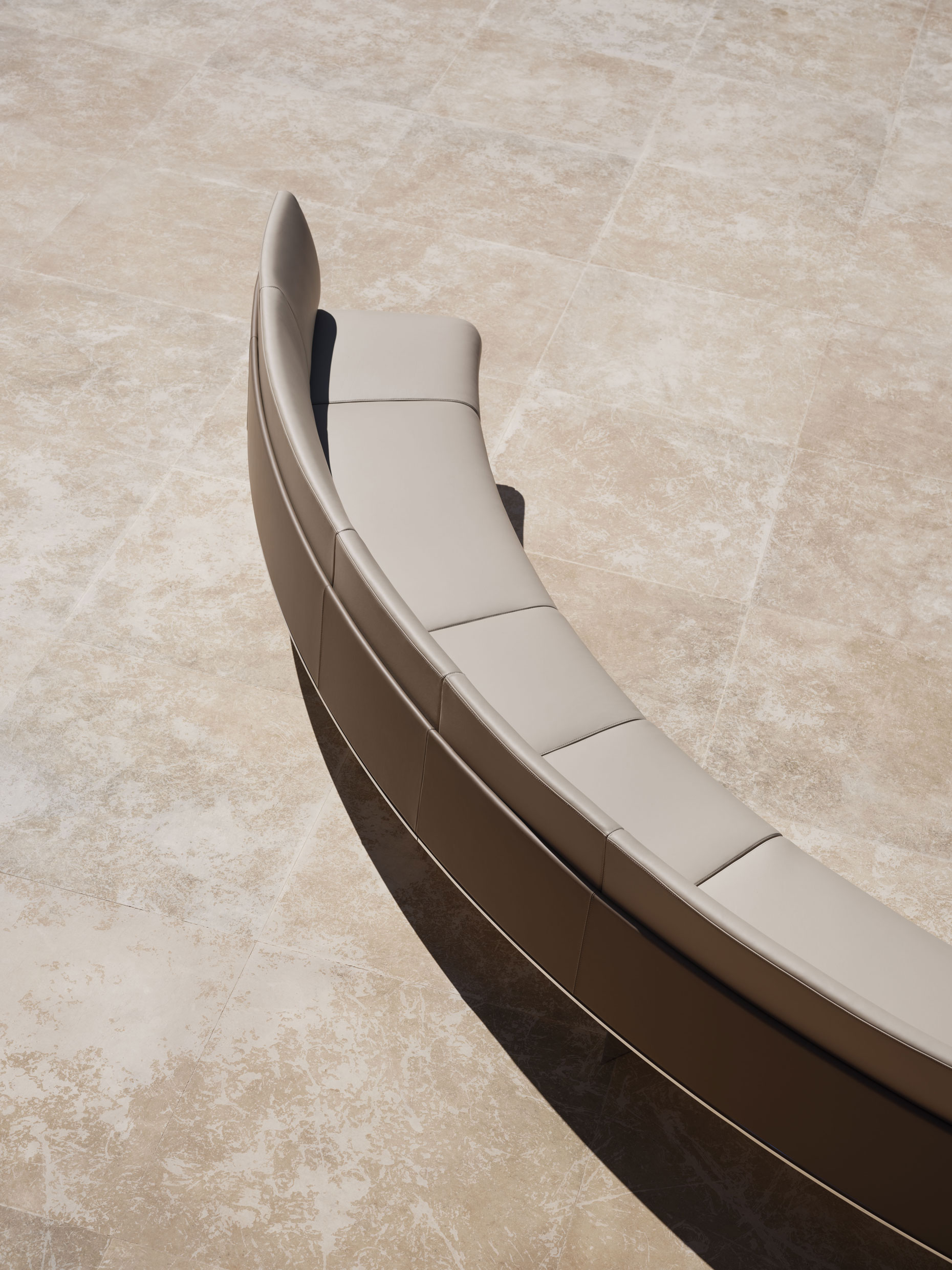 Detail of the joining of two modules of the curved sofa – ph. Alberto Strada
Detail of the joining of two modules of the curved sofa – ph. Alberto Strada
In this remote rural region, the striking sight of the stone theatre is matched only by that of its hilltop location – an elemental place where sky and Earth meet. At an altitude close to 1,000m, it is one of the highest open-air theatres in the world. Yet when approaching the Teatro Andromeda, visitors see only the dry stone wall of a sheepfold like any other in the region. Among these natural stones, however, are others that have been more precisely chiselled with sharp lines. And two of these great stones flank the entrance to the theatre, before the space opens out to reveal a circular stage and geometric stone stools.
Reina is from a shepherding family, but became fascinated by art from a young age. He had considered pursuing a career in the field, but later took control of his family’s farm and sought to reconcile the two strands of his life. A self-defined shepherd-artist, or “scultore-pastore”, Reina has crafted a space for art within his 300 acres of grazing land in the village of Santo Stefano Quisquina, about 60km south of Palermo.
“The spirit, like the wind, blows where it wants to, and it blew here, in this place where I used to take the sheep out to graze,” he says. “And strangely, as if enchanted, the sheep seemed to stand as still as stones, ruminating motionlessly. I sensed that a strange energy was flowing from this place, and I began to gather the first stones here.”
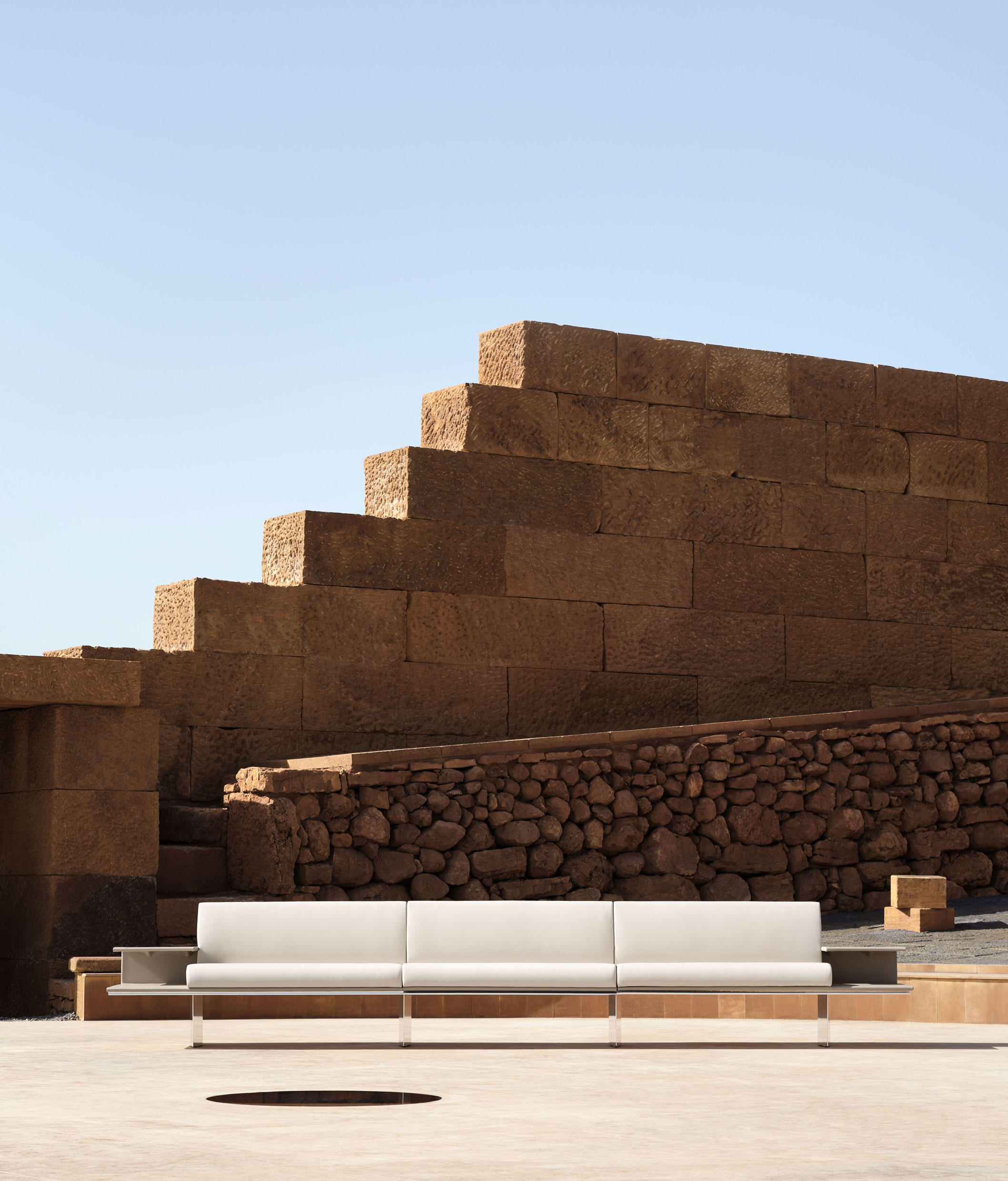 Linear sofa with cantilevered leather covered armrest tables at either end – ph. Alberto Strada
Linear sofa with cantilevered leather covered armrest tables at either end – ph. Alberto Strada
Reina gave the theatre its name after learning about the Andromeda galaxy, or galaxy M31, part of the Andromeda constellation. First recognised by Greco-Roman astronomer Ptolemy and included in The Almagest, his 2nd-century astronomical guide, the constellation was named for the myth of Andromeda, daughter of Queen Cassiopeia and King Cepheus of ancient Aethiopia. The story tells how the king was punished by the gods for the hubris of suggesting his daughter was more beautiful than the deities. As penance, Andromeda was chained to a rock on the coast to be sacrificed to the sea monster Cetus – which is why the constellation’s brightest stars are said to map the figure of Andromeda with arms spread and bound – before chance would have her rescued by Greek hero Perseus.
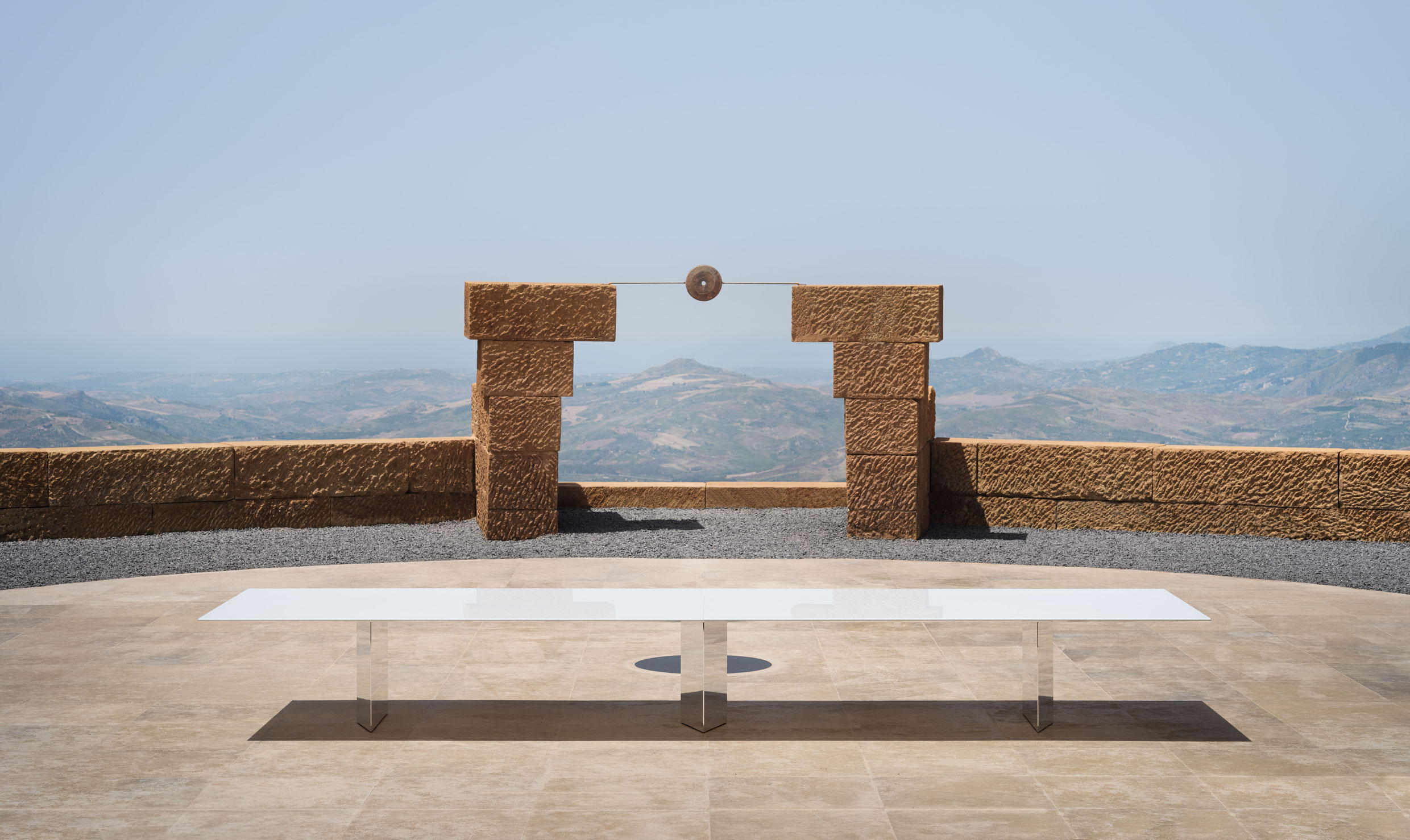
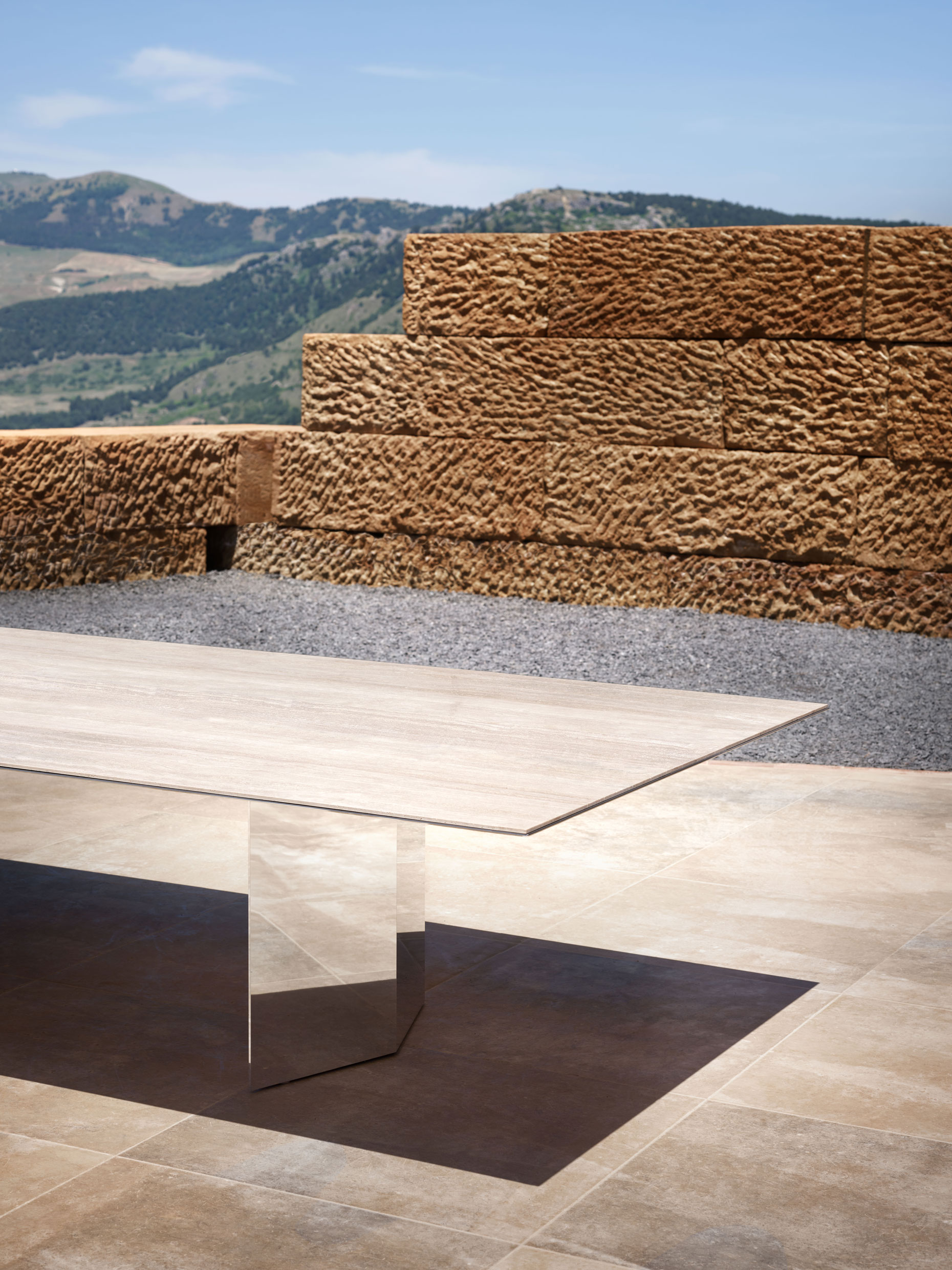 Detail of the rectangular table with travertine top – ph. Alberto Strada
Detail of the rectangular table with travertine top – ph. Alberto Strada
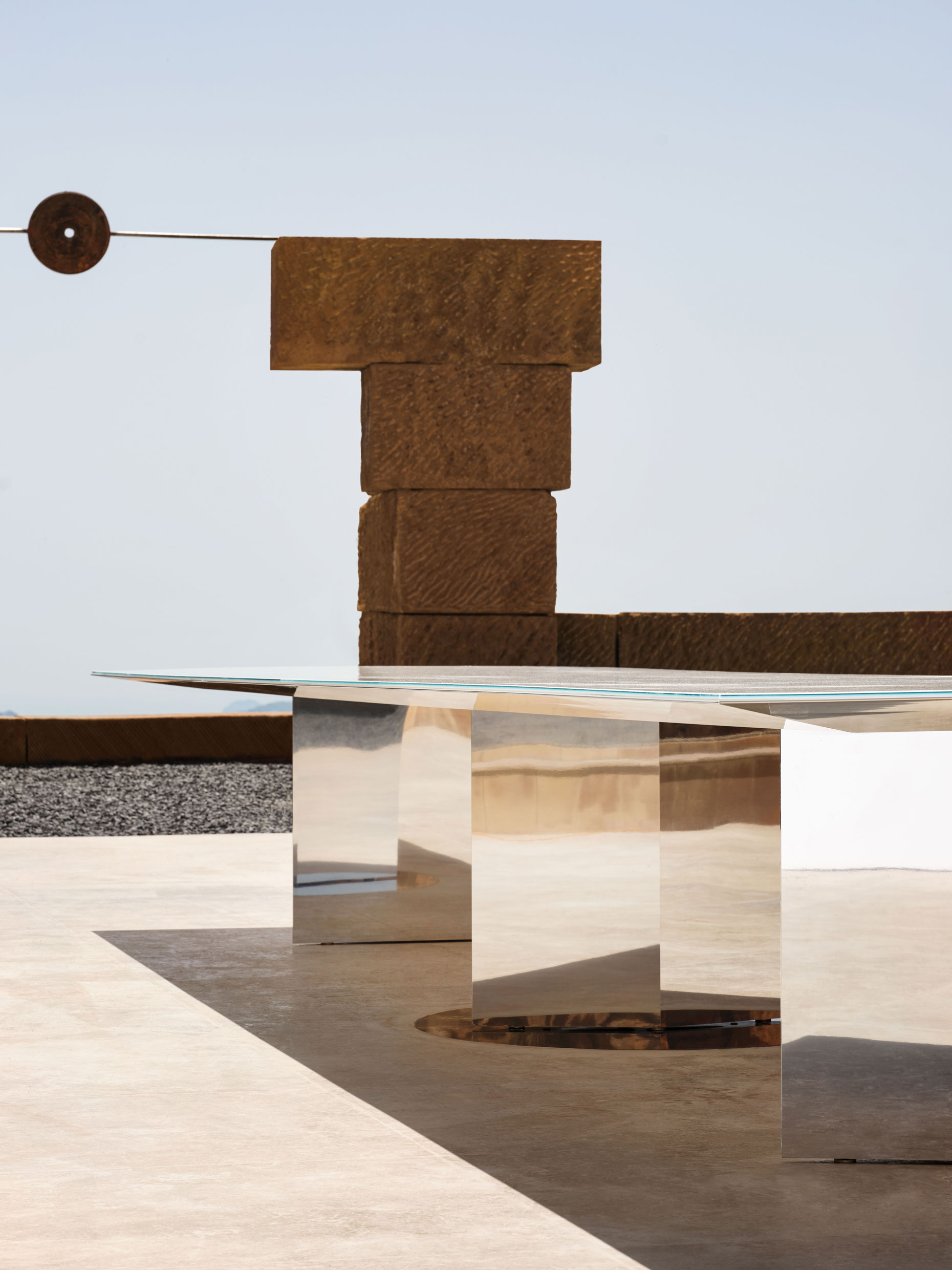 Detail of the rectangular table with extra-clear white back-painted glass top – ph. Alberto Strada
Detail of the rectangular table with extra-clear white back-painted glass top – ph. Alberto Strada
Placed at the boundary of the terrestrial and celestial, the theatre’s materials are solid and earth-hewn, yet their geometric forms take on new life with the changing light of the sky. Its 108 stone seats appear scattered, rather than arranged in regular, regimented rows, yet they carefully correspond to points in the constellation. With one cuboid stone form stacked at 45 degrees on top of one another, they appear as eight-pointed stars from above. A focal point, at the centre-back of the stage is a disc held aloft in the centre of an arch.
As both site-specific artwork and architecture, the Teatro Andromeda has been designed, according to Reina, for the dramatic tensions of both forms: “In this way, I tried to conform the theatre to nature that stages itself.” Surrounded by clouds and mountains, the backdrop cannot help but lend its own drama to the productions that take place there. Meanwhile, assembled around the theatre, are a number of further artworks and structures created by Reina and others, making up his Fattoria dell’Arte (Art Farm). There is Giuseppe Agnello’s sculpture Icaro Morente (Dying Icarus), in which Icarus lies prostrate on the ground and surrounded by feathers after his fall from the sky, while the approach to the theatre draws visitors past Reina’s own sculpture, Imago della Parola (The Imago of the Word), a large upright mask with holes for eyes and a mouth, positioned such that the mouth fills with light at the summer solstice.
With its purity of materials, careful craft and visual drama, it is unsurprising that the Teatro Andromeda has proved to be inspirational to designers. The Teatro Andromeda was chosen by architect Mario Cucinella for inclusion in the Italian pavilion of the 2018 Venice Architecture Biennale, representing the country’s southern region: the unique vision of an individual who is both farmer and artist, and a work of architecture born of the land and the traditions of working it. And now the site has inspired the UniFor Andromeda furniture collection, debuting at Milan Design Week 2024.
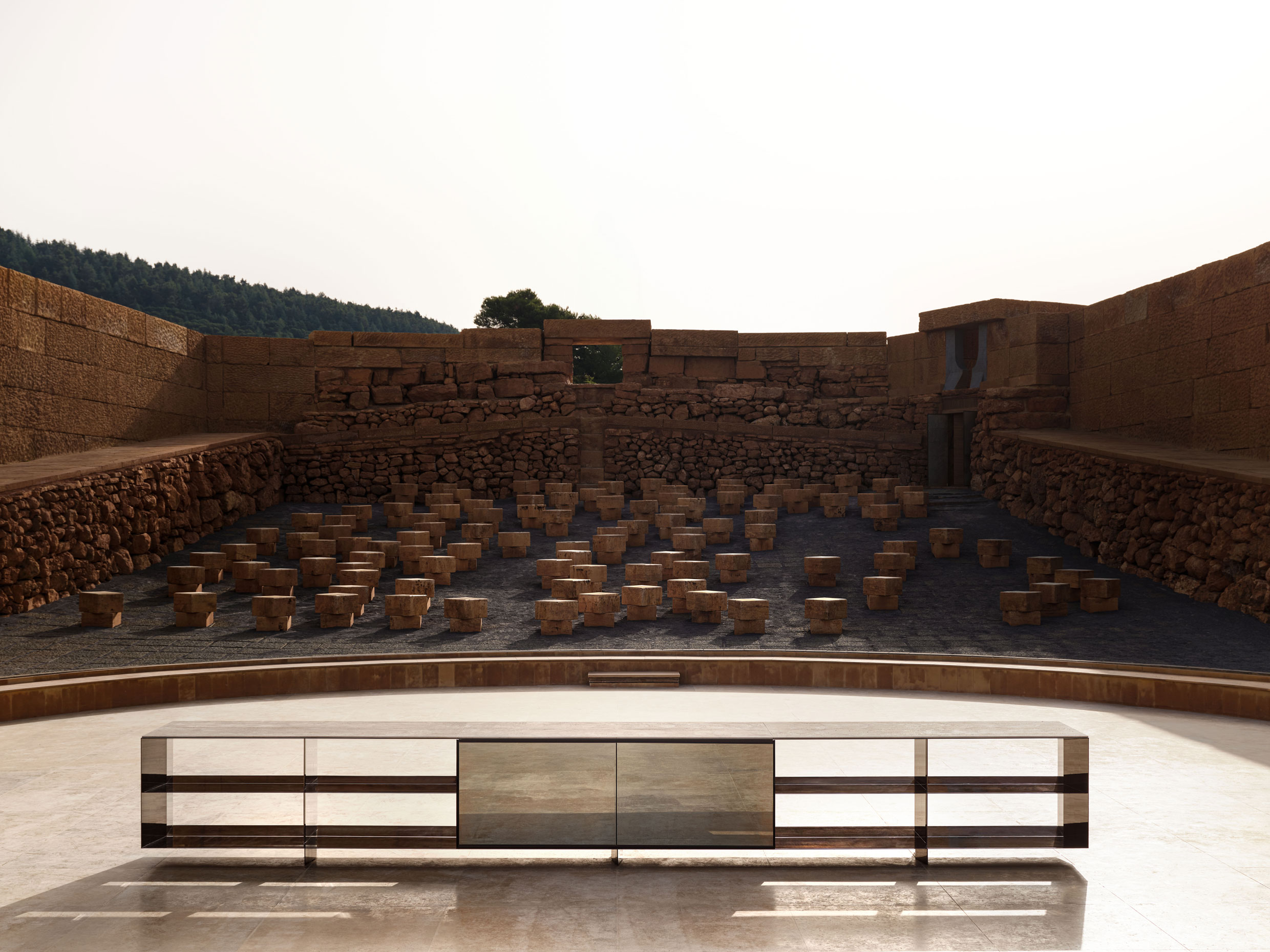
Andromeda was designed by LSM Studio, with the project led by LSM’s founding partner Debra Lehman Smith and director Mark Alan Andre. LSM has collaborated with UniFor for 30 years, but while most of their work has been project-specific, this is the first collection to be released commercially. Despite this wide release, however, it remains a collection in close dialogue with the site that inspired it. Marco Maturo, co-founder of Studio Klass and art director of UniFor and Citterio, says that he came across the story of Reina and his theatre when looking for a singular architectural site in Italy, and was drawn to its unique, “autarkic” style. “This theatre in the middle of Sicily was designed by someone who had no clients, so was completely free,” he says. As development for the collection, Maturo met Reina, who told him how he had studied art in Rome, where he had become influenced by architect Aldo Rossi. In particular, Reina was inspired by Rossi's floating Teatro del Mondo, created in 1979 for the Venice Biennale. Reina has also exhibited work since 1979, but it is his own theatre, the Teatro Andromeda, which is the major achievement of his more than 40-year career.
 Detail of the credenza in black chrome aluminum and travertine top – ph. Alberto Strada
Detail of the credenza in black chrome aluminum and travertine top – ph. Alberto Strada
Describing the Teatro Andromeda as sitting between a traditional Greek theatre and something more esoteric, and with an innate “sense of beauty”, Maturo explains that UniFor and LSM Studio were immediately inspired by the site. “The purity of this place immediately seemed to us capable of restoring that fine line between delicacy and rigour, the conceptual heart of the collection,” he says. As well as Reina’s craftsmanship and exacting approach, which saw him finesse the Teatro Andromeda over decades, it is also the artwork’s timeless nature that appealed.
“It really symbolises this collection because it's not about the past,” explains Lehman Smith. “It's not about the future. It's not about a trend. And it's not defined by a single moment of time.”
The collection – comprising tables, credenzas and sofas, made of polished and chromed aluminium, travertine, leather and glass – mixes curved and angular forms, much as the architecture of the theatre does. When placed in the Teatro Andromeda, for instance, the collection’s curved sofa, which was designed for lounge or waiting areas of working environments, echoes the roundness of the stage, while the reflective finish on its monolithic credenzas and the wide rhomboid legs of the tables reproduce the mountain surrounds, as the flat plane of the tabletop all but disappears into the horizon.
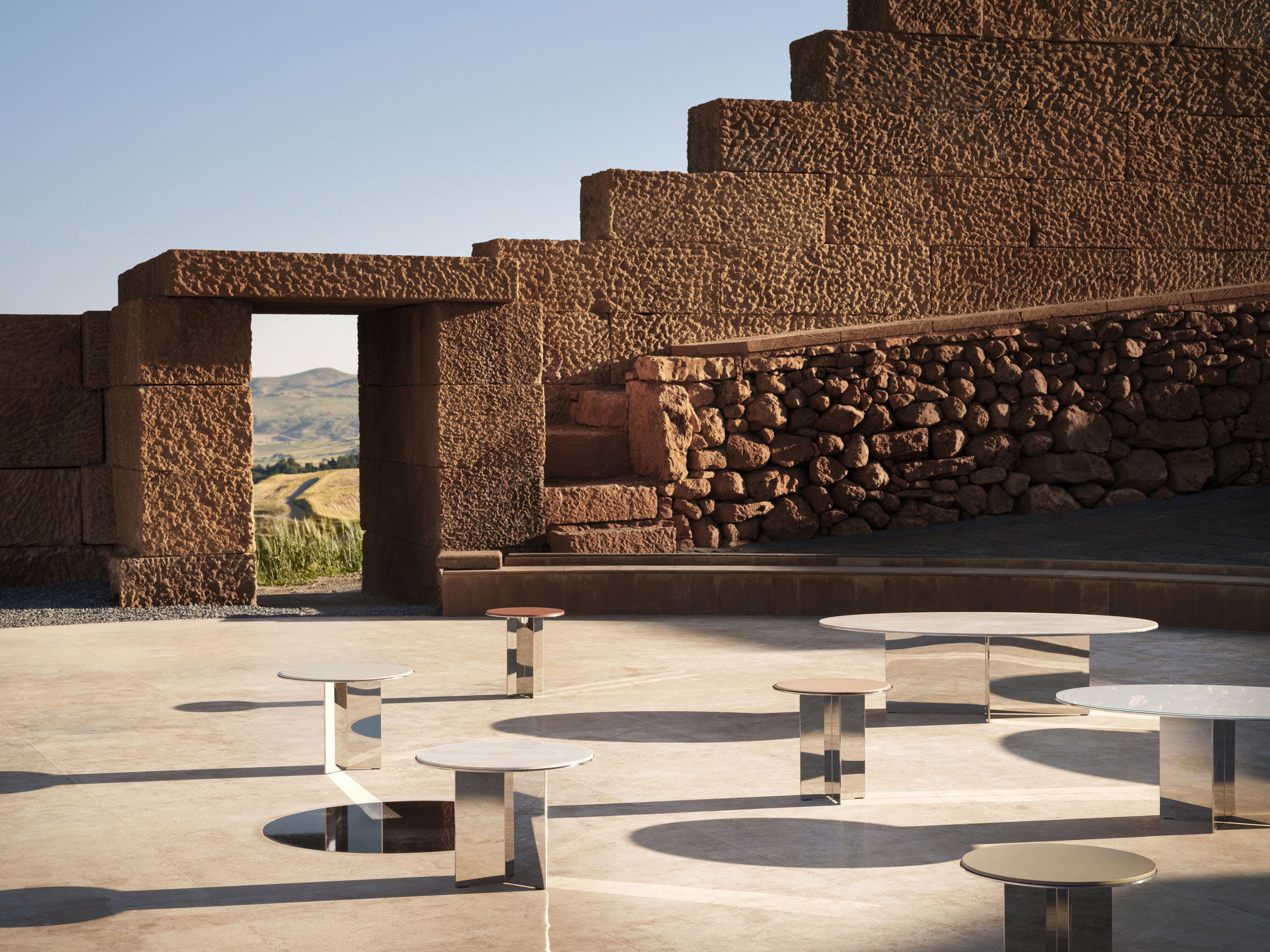 Round and elliptical coffee tables, with mirror-polished metal structure - ph. Alberto Strada
Round and elliptical coffee tables, with mirror-polished metal structure - ph. Alberto Strada
 Round and elliptical coffee tables in various sizes and tops - ph. Alberto Strada
Round and elliptical coffee tables in various sizes and tops - ph. Alberto Strada
Maturo chose to photograph the UniFor Andromeda Collection in the Teatro Andromeda, working with photographer Alberto Strada, with minimal editing, “because we did our best to [reproduce] the feelings that we had there”. Shooting at sunrise and sunset, “chasing the light”, Maturo says, the furniture “was fluctuating in between the sky and the Earth, depending on how you [moved] around it. In that place, you feel two elements: the first one is the Earth, and the second is the sky; it’s a place where [they are] 50/50.”
Main image: overview of a four-module composition of the curved sofa. The elements are linked together by an integrated proprietary joint system – ph. Alberto Strada
Kitchens are everyday spaces that exist to meet an immediate functional goal. When well designed, they are highly calibrated to support the convenient preparation of food.
In the centre of Milan, a short walk from the duomo, is Villa Necchi Campiglio, designed by Piero Portaluppi (1888-1967) for the Necchi Campiglio family between 1932 and 1935.
How we understand the world of design can depend on the means by which we engage with the subject.
Thanks for your registration.